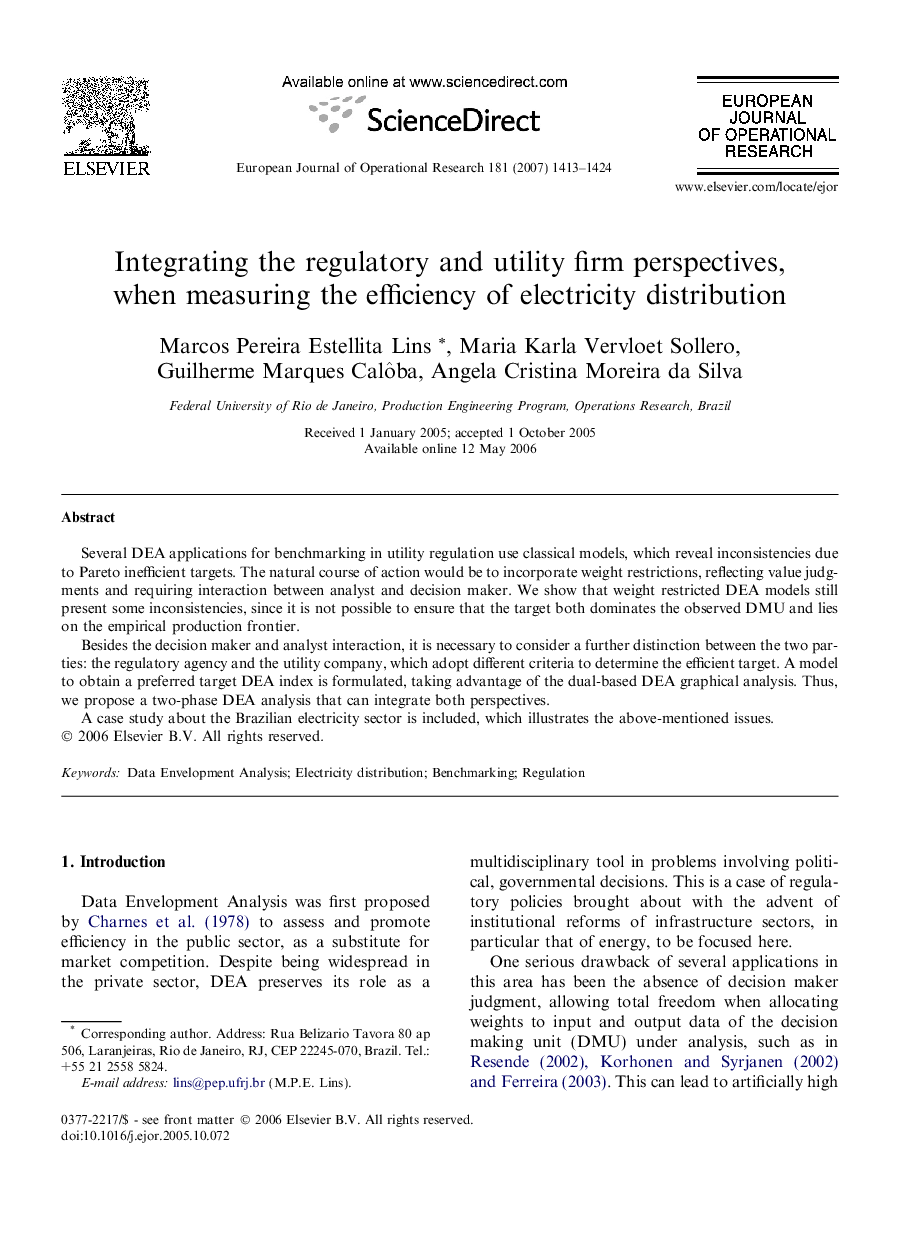| Article ID | Journal | Published Year | Pages | File Type |
|---|---|---|---|---|
| 481925 | European Journal of Operational Research | 2007 | 12 Pages |
Several DEA applications for benchmarking in utility regulation use classical models, which reveal inconsistencies due to Pareto inefficient targets. The natural course of action would be to incorporate weight restrictions, reflecting value judgments and requiring interaction between analyst and decision maker. We show that weight restricted DEA models still present some inconsistencies, since it is not possible to ensure that the target both dominates the observed DMU and lies on the empirical production frontier.Besides the decision maker and analyst interaction, it is necessary to consider a further distinction between the two parties: the regulatory agency and the utility company, which adopt different criteria to determine the efficient target. A model to obtain a preferred target DEA index is formulated, taking advantage of the dual-based DEA graphical analysis. Thus, we propose a two-phase DEA analysis that can integrate both perspectives.A case study about the Brazilian electricity sector is included, which illustrates the above-mentioned issues.
